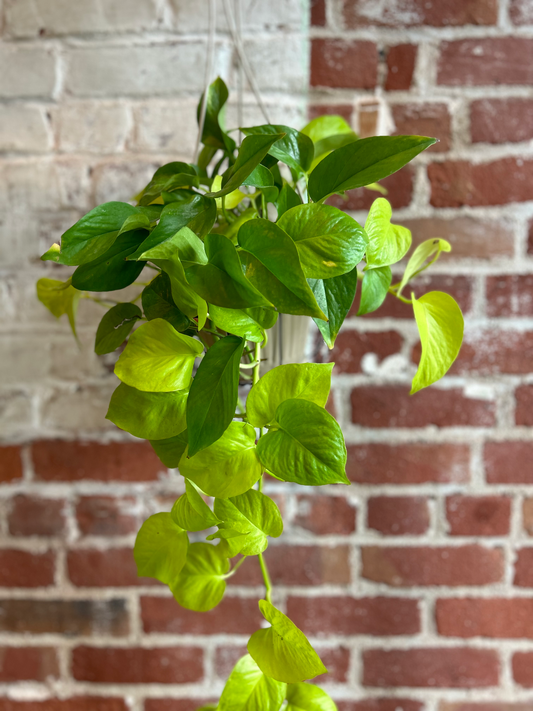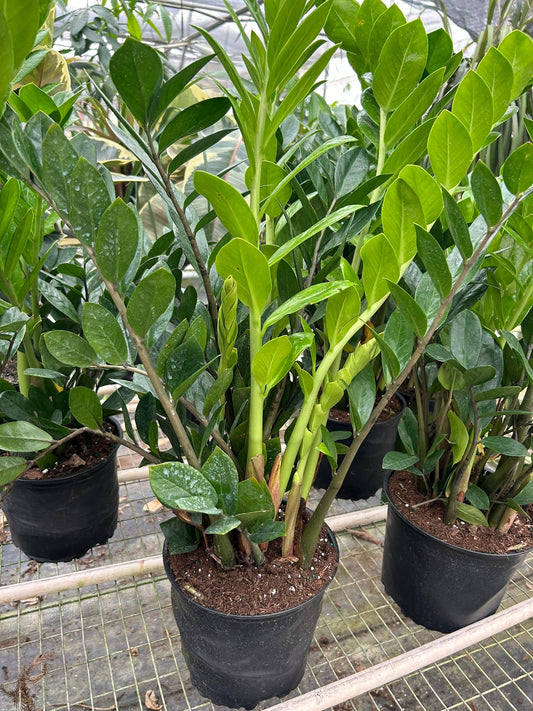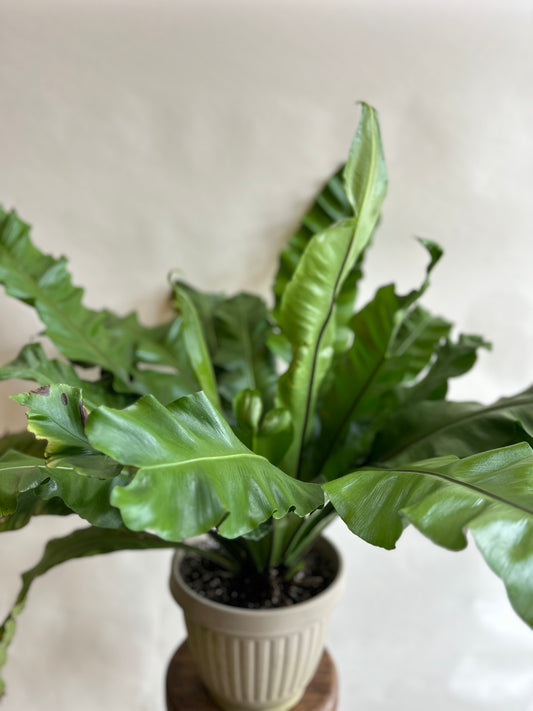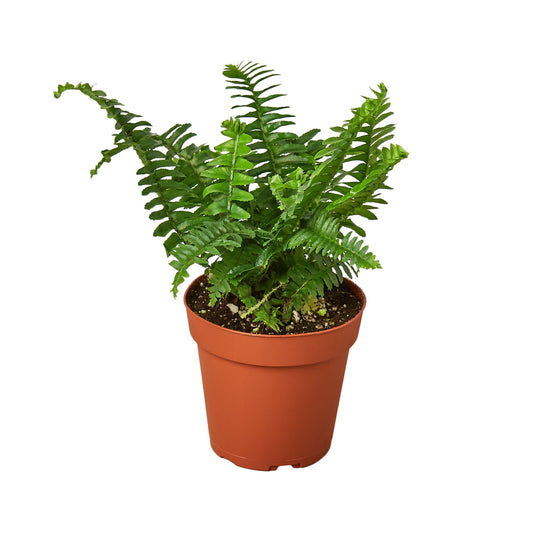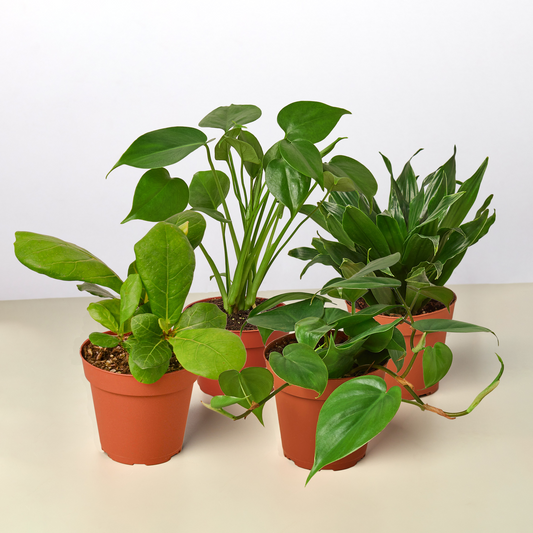Are Prayer Plants Toxic to Cats?
Cafe Planta Team
Have you ever looked at your flourishing prayer plant and wondered if it’s safe for your curious feline friend? As a plant lover and a cat parent, balancing a lush indoor garden while ensuring the safety of your pets can sometimes feel like walking a tightrope. So, the burning question is: Are prayer plants toxic to cats?
In the paragraphs that follow, we’ll explore this topic in depth, providing clarity and peace of mind for cat owners. We’ll also sprinkle in some tips on caring for your prayer plant and how to incorporate it into your home decor. Let’s get started on this leafy adventure!
Are Prayer Plants Safe for Cats?
Let’s cut to the chase: prayer plants, scientifically known as Maranta leuconeura, are non-toxic to cats. This is great news for cat owners who adore these beautiful, uniquely patterned plants. According to the ASPCA, prayer plants are not harmful to cats, dogs, or horses. So, if your kitty decides to nibble on a leaf or two, you can breathe a sigh of relief.
While they’re considered safe, it’s still wise to monitor your pets around any plants. Even non-toxic plants can cause mild digestive upset if ingested in large quantities. But generally speaking, you won’t need to worry about any serious health issues with prayer plants.
Interestingly enough, the non-toxic nature of prayer plants makes them a popular choice for households with pets. You get to enjoy the vibrant foliage without the stress of potential vet visits. So, if you’re looking to add some greenery to your pet-friendly home, the prayer plant deserves a top spot on your list.
The Allure of Prayer Plants
Before we delve into tips on caring for your prayer plant, let’s take a moment to appreciate its allure. These plants are known for their stunning leaf patterns, which can brighten up any room. The leaves fold up at night, reminiscent of hands in prayer, hence the name. It’s like having a little bit of nature’s magic right in your living room.
Prayer plants come in a variety of colors and patterns. You might find leaves adorned with shades of green, red, yellow, and even purple. This diversity makes them a versatile choice for any decor style. Whether your home is modern, rustic, or somewhere in between, a prayer plant can fit right in.
In addition to their beauty, prayer plants are relatively easy to care for. They thrive in indirect light and love humidity, making them perfect for bathrooms or kitchens. Plus, they’re quite forgiving, which is always a bonus for those of us who might forget to water every now and then.
Caring for Your Prayer Plant
Now that we’ve established that prayer plants are safe for your feline friends, let’s talk about how to keep these beauties thriving. While prayer plants are generally low-maintenance, they do have a few preferences that, if met, will keep them happy and healthy.
Light Requirements
Prayer plants prefer indirect light, which mimics the dappled sunlight of their native tropical environments. Too much direct sunlight can scorch their leaves, while too little light can cause them to lose their vibrant colors. A well-lit room with filtered light is ideal.
Watering Tips
These plants like to stay moist but not soggy. Aim to water them when the top inch of soil feels dry. Be mindful of overwatering, as this can lead to root rot—a common issue with many houseplants. A good rule of thumb is to water less frequently in the winter months, as the plant’s growth slows down.
Humidity and Temperature
Prayer plants thrive in high humidity. If your home is dry, consider investing in a humidifier or placing the plant on a tray filled with water and pebbles. They also prefer temperatures between 65°F and 80°F, so keep them away from drafts or sudden temperature changes.
Potting and Soil Needs
Choosing the right pot and soil for your prayer plant is just as important as light and water. These plants appreciate well-draining soil. A mix designed for African violets or a homemade concoction of potting soil, peat, and perlite can work wonders.
When it comes to pots, make sure there’s a drainage hole to prevent water from pooling at the bottom. Terracotta pots are a popular choice because they allow for air circulation, preventing the soil from becoming too compacted.
Repotting Your Prayer Plant
Prayer plants generally need repotting every couple of years or when they outgrow their current pot. Signs it’s time to repot include roots growing out of the drainage holes or the plant becoming root-bound. When repotting, choose a pot that’s only slightly larger than the current one to avoid overwhelming the plant with too much soil.
Dealing with Common Pests
Like many houseplants, prayer plants can sometimes fall victim to pests. Keeping an eye out for common culprits like spider mites, mealybugs, and aphids can save your plant from damage.
Spider mites are tiny and can be hard to spot, but the telltale sign is fine webbing on the leaves. To combat these pests, try wiping the leaves with a damp cloth or using insecticidal soap. Mealybugs look like small cotton balls and can be removed with a cotton swab dipped in alcohol.
Regularly inspecting your plants and maintaining a routine of cleaning their leaves can help prevent pest infestations. A healthy plant is less likely to attract pests, so keeping your prayer plant in optimal conditions is your best defense.
Incorporating Prayer Plants into Your Home Decor
Prayer plants aren’t just good for your health and your pets—they’re also a fantastic way to spruce up your home. Their unique patterns and vibrant colors make them a striking addition to any room.
Perfect Spots for Prayer Plants
- Living Room: Place your prayer plant on a side table or a plant stand to add a pop of color to your living space.
- Kitchen: The humidity from cooking can benefit your plant, and it adds a lively touch to your countertop.
- Bathroom: If you have enough light, the natural humidity in bathrooms is ideal for a prayer plant.
Pair them with other tropical plants like ferns or calatheas for a lush, green oasis. And don’t forget to play around with different pots and stands to find the perfect match for your decor style.
Creating a Pet-Friendly Plant Collection
Building a collection of non-toxic plants is a wonderful way to ensure your home is both beautiful and safe for your pets. Alongside prayer plants, consider adding these other pet-friendly options:
- Spider Plant: Known for its air-purifying qualities, this plant is safe for cats and dogs.
- Bamboo Palm: Another air-purifier, it’s also non-toxic to pets.
- Boston Fern: This lush plant is safe for pets and adds a touch of elegance to any room.
By curating a selection of non-toxic plants, you can enjoy a vibrant indoor garden while keeping your furry friends safe and sound.
Decorating Tips for Plant Lovers with Pets
As a plant lover with pets, you might find yourself worrying about curious paws and teeth. Here are some decorating tips to keep both your plants and pets happy:
- Use Hanging Planters: Hanging planters keep plants out of reach, adding vertical interest to your decor.
- Opt for Shelves: Place plants on higher shelves to keep them away from inquisitive pets.
- Create a Plant Corner: Dedicate a corner to your plant collection, using taller plants to create a barrier.
These strategies not only protect your plants but also add a dynamic element to your interior design. Plus, it keeps your pets out of trouble!
Final Thoughts
In summary, prayer plants are a safe and stunning addition to any home, especially those shared with cats. Their non-toxic nature means you can enjoy their beauty without worry, and with the right care, they’ll thrive for years to come.
At Cafe Planta, we’re passionate about helping you create a beautiful, plant-filled space. Whether you’re seeking plant care tips or looking to expand your collection, we’re here for you. If you have any questions or need assistance, feel free to email us or send us a message on Instagram. We believe in the power of plants to connect us all, and we’re excited to share that journey with you.


